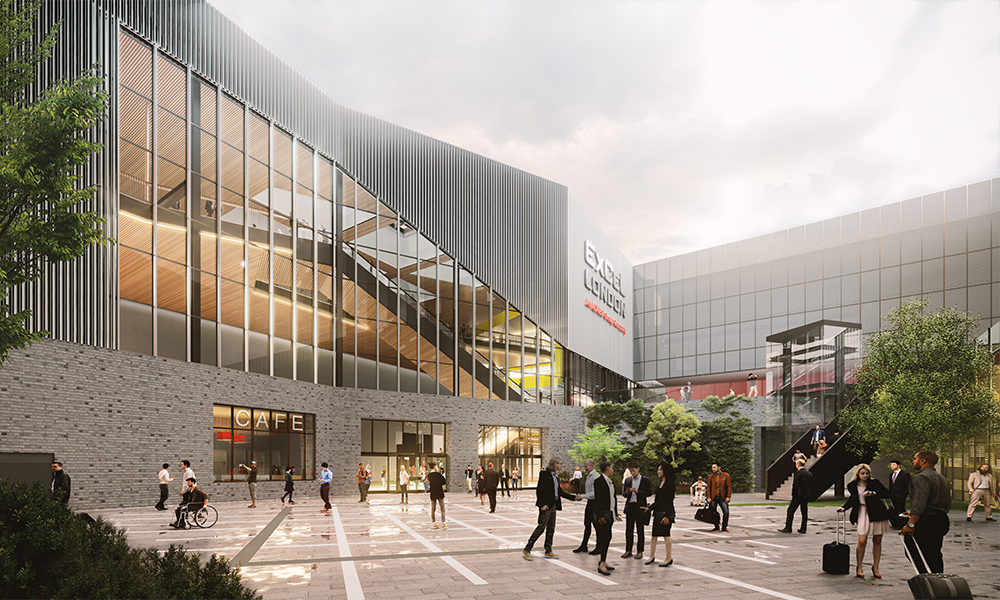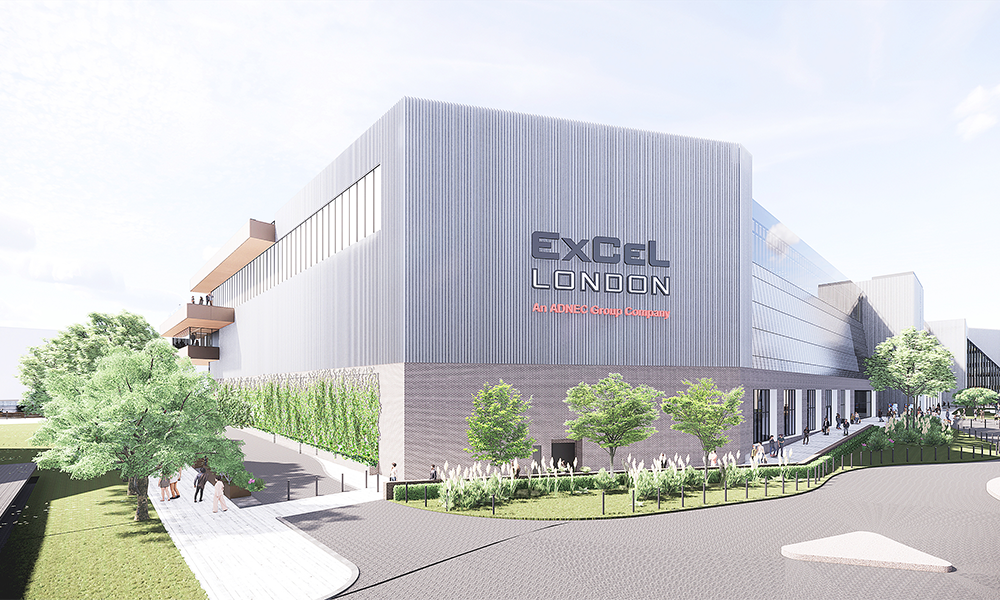CEO Jeremy Rees says the 25% boost in space and new facilities are already proving popular with organisers and brands, bring prosperity to the capital and Newham and the Royal Docks

Subscribe to our free Wharf Whispers newsletter here
People of greater seniority, plus time, results in events that do more for those attending and their organisers.
It’s this equation that underpins the expansion of Excel London in Royal Docks and the reason it’s already proving popular with brands from across the world.
Opened earlier this summer, the new facility saw early action hosting Formula E as its debut.
Built by Canary Wharf-based McLaren Construction, the extra 25,000sq m of space boosts the venue’s overall capacity by 25% to 125,000sq m.
That’s golden acreage for organisers to use, especially with the Elizabeth Line working as a major artery to deliver an ever increasing flow of people to the venue.

a crucial transport link
“Since it started running and now everyone’s become familiar with it, visitor numbers have
risen 20%, dwell time has gone up by 20% and there are substantially more senior people from organisations coming to events here,” said Jeremy Rees, CEO of Excel London.
“The data is now backing up what we’ve been observing.
“If we’re in the business of connecting people, we’re doing that with an audience that’s a fifth bigger, is more senior and for a period of time that’s 20% longer.
“That multiplier effect is very substantial.”
With such positive figures as a foundation, it’s perhaps little wonder that an enhanced Excel is proving very popular following the introduction of the new facilities.
The extension includes an expanded international convention centre – allowing the venue to compete to host some of the largest congresses in Europe – as well as new exhibition halls, conference spaces and meeting rooms.
It is part of a wider £350million investment programme in London’s business and tourism economy by venue owner ADNEC Group.

a transformational expansion
“Our customers are saying the extension transforms the way they can use Excel,” said Jeremy.
“There are 37 rooms, you can have 7,000-8,000 delegates in the new space alone in a very cost-effective and efficient way.
“By using its external terraces, organisers can also create more of an emotional impact.
“Around 60% of our corporate market now is coming out of the USA – large tech, pharma and life sciences events.
“It’s exactly for them that we have built this facility.
“The encouraging trend is that they like it, they’re booking it and they’re going to be bringing tens of thousands of people to London for the first time.
“The market is speaking, everyone is moving forward with intent and the space is already getting booked up.
“It will be fascinating to see what happens over the coming months.
“Our owners in Abu Dhabi are wholeheartedly committed to investing in the experience economy in London.
“They’re extraordinarily proud of what’s been achieved so far.
“Opening the extension was definitely a history-making moment.”

Excel London: creating a halo effect
There’s a wider story here, however.
While greater provision of facilities at the venue is good news for Excel, its owners and their clients, the benefits extend well beyond its walls.
“The new facility is a very substantive step forward in terms of regular employment and profile for the area and I think the halo effect will continue to ripple through the estate and further afield into Newham and the surrounding boroughs,” said Jeremy.
“It’s an increasingly attractive proposition to invest in hospitality and the experience economy in and around Excel.
“When you look at Canary Wharf and London City Airport, the wealth building agenda in Newham and beyond with the GLA, there is a really coherent strategy to maximise the experience for visitors and the returns of investors and investees in London.
“There’s a real sweet spot at the moment and there are big players investing heavily in infrastructure – we’re one of those – to make sure as a city we stay ahead of the game compared to our European competitors.
“We’re already leading Europe and, globally, with this new facility, we are very much in the top percentile of venues that have everything to offer – exhibition and convention space, amazing transportation as well as fantastic hospitality offerings.
“My sense is that, until the next venue is completed in a tier one city, Excel is the place to come to.
“It’s fashionable, practical and commercially resonant for everyone that uses it.
“This new extension allows us to present a new kind of space that’s not existed in London before – it’s genuinely transformational for the city.”
Excel, of course, isn’t standing still.
Future plans include investment in its digital infrastructure, its hospitality offering and outside areas.
This will build on the success of Immerse LDN, a series of spaces of chapters on the edge of the dock that have been generating a steady stream of visitors to immersive attractions celebrating the likes of Formula 1, Egyptian history, Friends and Squid Game.
“There are regularly around 6,000 people a day visiting these and they’re here for a very different purpose than those coming to events at Excel,” said Jeremy.
“They are coming to be entertained, for fun, for enjoyment and they’re bringing their families.
“It means bars and restaurants can build really quite compelling business cases to locate here with consistent trade flowing though on a daily and weekly basis.
“It’s not just Monday-Friday, it’s also the weekends and it extends into the evenings too. In terms of driving a more vibrant estate, it brings life to these spaces on a consistent basis.
“I believe London has deserved more substantive, more modern and flexible infrastructure and it now has that.
“We all need to work very closely together to attract more inbound business, which ultimately creates a substantial effect throughout the visitor economy, advantaging so many of our businesses and organisations.”
key details: Excel London
Full venue details for those interested in hosting events at Excel London can be found on its website alongside extensive listings detailing what’s on in Royal Docks.
Read more: Cody Dock becomes a keeper of the River Lea’s stories

















